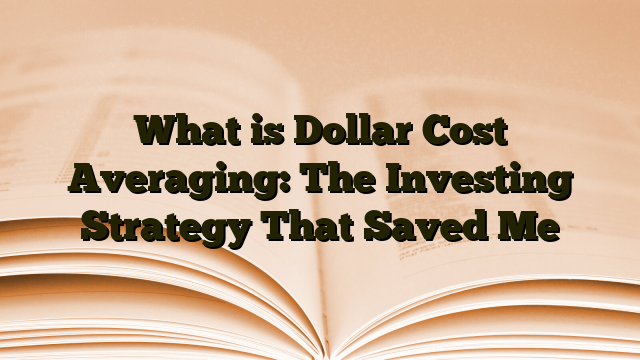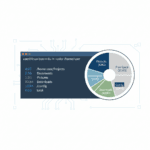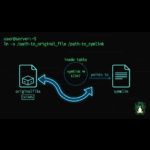Dollar cost averaging is the practice of investing a fixed amount of money at regular intervals, no matter what the market is doing. It’s the investing equivalent of autopilot. You pick an amount, set a schedule, and let it run while you go live your life.
I discovered this strategy after losing $15,000 trying to time the market. I’d wait for the “perfect” entry point, convince myself the market was about to crash, then watch stocks climb another 20% while my cash sat earning nothing. Dollar cost averaging fixed my broken investing brain.
Here’s the thing nobody tells you about DCA: it’s not the strategy that produces the highest returns. Research shows lump sum investing beats dollar cost averaging 68% of the time. But DCA is the strategy that actually gets you invested instead of paralyzed by fear and indecision.
How Dollar Cost Averaging Actually Works
The mechanics are stupid simple. You invest the same dollar amount on a regular schedule—weekly, monthly, quarterly—regardless of the share price. When prices are high, your money buys fewer shares. When prices drop, you automatically buy more shares.
Let’s say you invest $500 every month in an S&P 500 index fund. In January, shares cost $100, so you buy 5 shares. In February, the market tanks and shares drop to $80. Your $500 now buys 6.25 shares. In March, prices recover to $90, and you get 5.56 shares.

After three months, you’ve invested $1,500 and own 16.81 shares. Your average cost per share is $89.24, even though the share price averaged $90 over those three months. That’s the mathematical advantage of dollar cost averaging.
The real power shows up over years, not months. That $500 monthly investment in the S&P 500, maintained for 20 years at an 11% annual return, grows to roughly $400,000. You invested $120,000 total. The compound interest effect combined with consistent buying created $280,000 in gains.
Why Dollar Cost Averaging Beats Trying to Time the Market
I spent two years trying to time the market before I gave up. I’d analyze charts, read market commentary, convince myself I could predict the next crash. My hit rate was maybe 30%, and even when I was right, I’d second-guess myself and sell too early.
The problem with market timing is simple: nobody can do it consistently. Professional fund managers with research teams and advanced algorithms can’t time the market. You definitely can’t either. Neither can I.
Dollar cost averaging removes the timing decision entirely. You’re not trying to predict if next month will be higher or lower. You just invest on schedule. During the 2022 bear market, while everyone else was panicking about when to buy the dip, my automatic investments kept buying every two weeks. Some purchases were at higher prices, some at lower. It averaged out.
Here’s what actually happens when you try to time the market: you wait for a crash. The market keeps climbing. You feel stupid but convince yourself a correction is coming. It climbs another 15%. Finally, it drops 8%, and you think “this is it!” You buy. It drops another 12%. You panic and sell. Then it recovers and climbs 30% while you’re still sitting in cash.
Dollar cost averaging means you’re buying during crashes without having to call the bottom. You’re buying during rallies without having to call the top. You’re just buying, period.
The Math Behind DCA vs Lump Sum Investing
I need to be honest about something that most DCA advocates won’t tell you: lump sum investing statistically produces better returns. Vanguard’s research covering 1976-2022 found that investing a lump sum outperformed dollar cost averaging 68% of the time after one year.
The reason is straightforward. Markets trend upward over time. If you have $10,000 today and you dollar cost average it over 12 months, you’re keeping most of that money in cash for months while the market probably climbs. That cash earns basically nothing while invested money grows.
Morgan Stanley analyzed over 1,000 historical periods and found lump sum investing generated 0.42% higher annual returns for aggressive portfolios. That might not sound like much, but over decades, it compounds to tens of thousands of dollars.
So why would anyone use dollar cost averaging? Because most people don’t have large lump sums sitting around. You’re working with your paycheck. You get paid twice a month, and you invest part of it. That’s not a choice between DCA and lump sum—that’s just regular investing.
The second reason is psychological. If you inherit $50,000 and invest it all on Monday, then the market crashes 20% on Wednesday, how do you feel? Statistically, you should still invest it all at once because markets recover. Emotionally, many investors can’t handle that regret. They’d rather dollar cost average over 6-12 months to reduce the chance of horrific timing.
I’ve done both. When I have a lump sum, I invest it immediately because the math says to. When I’m investing from my paycheck, I use dollar cost averaging because that’s my only option. Both work. The key is actually investing instead of leaving money in a savings account earning 0.5%.
Real Examples of Dollar Cost Averaging in Action
My clearest dollar cost averaging success story happened during 2020. I’d been investing $1,000 monthly into a total market index fund since January 2020. Then March hit, and the market dropped 34% in a month.
My January purchase at $85 per share bought 11.76 shares. My February purchase at $87 bought 11.49 shares. Then in March, shares dropped to $58. My $1,000 bought 17.24 shares. April recovered to $68, and I got 14.71 shares.
By December 2020, shares were back to $92. I’d invested $12,000 over the year and owned 152 shares at an average cost of $78.95 per share. The year-end value was $13,984. More importantly, I kept investing through the crash instead of panicking and selling.
Compare that to my friend who stopped investing in March because he was “waiting for the bottom.” He had $6,000 in cash ready to invest but wanted to time it perfectly. He finally bought back in around $85 in July, missing the entire recovery from $58. Dollar cost averaging forced me to buy the dip without having to guess when the dip was over.
Another example: I’ve been dollar cost averaging into a dividend growth portfolio for five years. Every month, $800 goes into a mix of dividend stocks. My dividend stocks now generate about $3,200 annually in dividends, which I reinvest automatically. The combination of regular purchases plus dividend reinvestment has turned $48,000 in total contributions into $71,000 in current value.
The key isn’t timing or picking the perfect stocks. It’s consistency. Month after month, regardless of headlines about inflation, recession, or whatever crisis is trending.
When Dollar Cost Averaging Makes Sense
Dollar cost averaging makes sense in three specific situations. First, when you’re investing from a paycheck. You get paid monthly or biweekly, so you invest monthly or biweekly. This isn’t really a choice—it’s just how employment works. Once you’ve built your emergency fund, regular investing from your paycheck is the most reliable wealth-building strategy.
Second, dollar cost averaging makes sense when you’re psychologically unable to invest a lump sum. If you have $50,000 sitting in savings and the thought of investing it all at once makes you nauseous, then spreading it over 6-12 months is better than never investing it at all. Yes, lump sum statistically wins. But a dollar cost averaging plan that actually gets executed beats a lump sum plan that stays in cash forever.
Third, DCA works well in volatile markets where you can’t predict direction but know you want exposure. Crypto is a perfect example. I dollar cost average $200 weekly into Bitcoin and Ethereum. Some weeks I’m buying at peaks. Some weeks I’m buying crashes. Over time, it averages out, and I avoid the emotional whipsaw of trying to time crypto markets.
Dollar cost averaging doesn’t make sense when you’re trying to use it with a lump sum you’re already comfortable investing. If you have $20,000 ready to invest and you’re not scared of market volatility, just invest it. The opportunity cost of spreading it over a year typically exceeds any benefit from averaging.
The Biggest Dollar Cost Averaging Mistakes I See
The most common mistake is stopping during market crashes. The entire point of dollar cost averaging is to keep buying when prices drop. But I’ve watched people set up automatic monthly investments, then pause them during the 2022 bear market “until things stabilize.” They missed buying shares at 20-30% discounts.
If you’re going to use dollar cost averaging, you have to commit to continuing through downturns. That’s when the strategy provides the most value. Buying high is fine. Buying low is better. But only buying high defeats the purpose.
The second mistake is using dollar cost averaging as an excuse to avoid learning about what you’re buying. Just because you’re investing $500 monthly doesn’t mean you should dump it into random stocks. Understanding the fundamentals of what you’re investing in still matters.
I learned this the hard way when I dollar cost averaged into a tech stock for eight months without really understanding the business. The company was burning cash with no path to profitability. I kept buying shares as they dropped from $40 to $30 to $20, thinking I was getting deals. They dropped to $8, and the company eventually went under. Dollar cost averaging doesn’t fix bad investment choices.
The third mistake is paying unnecessary fees. If your broker charges $7 per trade, and you’re investing $200 weekly, you’re losing 3.5% to fees immediately. That destroys your returns. Use a broker with free trades for dollar cost averaging. Most major brokers now offer commission-free trading on stocks and ETFs.
Fourth, people dollar cost average into too many positions. I’ve seen investment accounts with 30 different stocks, each getting $50 monthly. That’s not diversification—that’s chaos. You can’t track 30 positions effectively. Focus your dollar cost averaging on 5-10 quality investments or just use broad index funds.
Finally, the biggest mistake is using dollar cost averaging with money you might need soon. This is a long-term strategy. If you’re dollar cost averaging into stocks but you need that money in 18 months for a house down payment, you’re doing it wrong. Markets can stay down for years. Dollar cost averaging only works if you have time to let it average out.
Dollar Cost Averaging vs Other Investing Strategies
Dollar cost averaging sits in an interesting middle ground between different investing approaches. It’s not active trading where you’re making constant buy/sell decisions based on market conditions. Understanding whether you’re a trader or investor helps clarify whether DCA fits your goals.
Compared to lump sum investing, DCA trades potential returns for psychological comfort and reduced timing risk. The research clearly shows lump sum wins more often. But DCA has a 100% execution rate for people who can’t stomach lump sum risk. A working strategy beats a theoretically better strategy you never implement.
Compared to trying to time the market, dollar cost averaging is overwhelmingly superior. Market timing requires being right twice—when to buy and when to sell. Even professional investors rarely achieve this consistently. DCA removes the timing decision and replaces it with a schedule.
Compared to value averaging, which adjusts investment amounts based on portfolio value, dollar cost averaging is simpler but less optimized. Value averaging invests more when markets are down and less when markets are up. It typically produces better returns than DCA but requires more active management and discipline.
The reality is that for most people, dollar cost averaging is the default because it matches how they earn money. You don’t choose DCA over lump sum investing—you choose DCA because you get paid every two weeks and you invest part of each paycheck. That’s not a strategy choice. It’s just investing with the money you have available.
How to Set Up a Dollar Cost Averaging Plan That Actually Works
Setting up dollar cost averaging correctly takes about 30 minutes. First, decide your investment amount. I recommend 15-20% of your take-home pay if you can afford it. If you’re just starting, even 5-10% builds the habit. The amount matters less than the consistency.
Second, pick your schedule. Match it to your paycheck. If you get paid biweekly, invest biweekly. If you get paid monthly, invest monthly. Don’t overthink this. The difference between weekly and monthly investing over 20 years is negligible.
Third, choose what you’re buying. For most people, a total market index fund or S&P 500 index fund is the right answer. You get instant diversification, low fees, and market returns. I personally split my dollar cost averaging between a total market fund (70%) and a dividend growth fund (30%).
Fourth, automate everything. Set up automatic transfers from your bank account to your brokerage account on your payday. Set up automatic purchases of your chosen investments. Remove any manual steps that give you opportunities to skip months.
The automation is critical. I tried manual dollar cost averaging for six months, and I missed purchases because I forgot, or I was traveling, or I convinced myself to wait because the market looked shaky. Automatic investing removes your ability to make excuses.
Fifth, set up dividend reinvestment. If you’re buying dividend-paying investments, automatically reinvest those dividends. This creates a compounding effect where your regular investments are buying shares, and your dividends are buying more shares, accelerating your accumulation.
Finally, review annually but don’t fiddle monthly. Once a year, check if your allocation still makes sense. Maybe you want to increase your investment amount because you got a raise. Maybe you want to adjust your fund selection. But don’t make changes every time the market moves. That defeats the entire purpose of dollar cost averaging.
The Psychology of Dollar Cost Averaging
The real value of dollar cost averaging isn’t mathematical—it’s psychological. It’s an investing strategy that works with human nature instead of against it. We’re emotional about money. We panic during crashes. We get greedy during bubbles. Dollar cost averaging removes most opportunities to let emotions destroy our returns.
When you dollar cost average, market crashes become less scary. Instead of watching your portfolio value drop and panicking, you’re buying shares at discounts. Your regular investment buys more shares when prices fall. This mental reframe changes crashes from terrifying events into opportunities.
I remember the first bear market I experienced with dollar cost averaging in place. My portfolio dropped 18% over three months. But my automatic purchases kept buying every two weeks. Instead of feeling pure dread, I felt a weird mix of “this sucks” and “I’m getting deals.” That psychological shift kept me invested through the downturn.
Dollar cost averaging also removes the regret of bad timing. If you invest a lump sum and the market drops 15% the next month, you feel terrible. But with DCA, you never invest everything at once. Some purchases will be mistimed. Others will work out great. It averages out, which is somehow easier to accept.
The strategy also builds discipline. Investing becomes a habit rather than a decision. You’re not constantly asking yourself “should I invest this month?” You’ve already decided. The automation handles it. This habit formation is worth more than any slight difference in returns between DCA and lump sum.
Managing risk is as much about managing your own behavior as it is about managing market volatility. Dollar cost averaging is a behavioral risk management tool disguised as an investment strategy.
Dollar Cost Averaging in Different Market Conditions
How dollar cost averaging performs depends heavily on market conditions. In a steadily rising market, DCA underperforms lump sum investing because you’re constantly buying at higher prices. Every purchase costs more than the last. A lump sum invested at the beginning captures the entire rally.
I experienced this during 2017-2018. The market climbed consistently, and my monthly purchases kept buying at new highs. Looking back, a lump sum investment in January 2017 would have performed better than 24 months of dollar cost averaging. But I didn’t have a lump sum—I had a paycheck. So DCA was my only option.
In a declining market, dollar cost averaging shines. Each purchase buys more shares as prices fall. Your average cost per share drops over time. When the market eventually recovers, you own more shares than you would have from a lump sum purchase before the decline.
The 2022 bear market demonstrated this perfectly. Friends who invested lump sums in January 2022 watched their portfolios drop 25% by October. My dollar cost averaging throughout the year meant my average purchase price was much lower than January’s peak. When markets recovered in 2023, I was back to profits faster.
In sideways or volatile markets, DCA performs best of all. When markets chop up and down without clear direction, dollar cost averaging naturally buys more shares during the down moves and fewer during the up moves. This is exactly the “buy low, sell high” behavior that investors try to achieve manually but usually fail at.
The key insight: you can’t predict which market condition you’ll face. Dollar cost averaging delivers decent results in all three scenarios. It’s not optimal in any single scenario, but it’s good enough in all of them. And “good enough consistently” beats “optimal occasionally.”
Is Dollar Cost Averaging Right for You?
Dollar cost averaging works best for people who get regular paychecks and want to invest part of them. If that’s you—and it’s most working people—then yes, DCA is right for you. It’s not even really a choice. It’s just the natural way to invest when you earn money over time.
DCA also works for people who are risk-averse and can’t handle the stress of lump sum investing. If you have $30,000 to invest but the thought of putting it all in the market at once makes you lose sleep, spreading it over a year is reasonable. The emotional benefit of sleeping well outweighs the statistical benefit of lump sum investing.
Dollar cost averaging doesn’t work well for experienced investors who understand market volatility and have lump sums available. If you’re comfortable with risk, understand that markets trend upward, and have cash ready to invest, lump sum investing produces better results. The opportunity cost of holding cash while dollar cost averaging typically exceeds any benefit.
For me personally, I use both. My paycheck goes into dollar cost averaging—that’s automatic and non-negotiable. When I get unexpected money like a bonus or freelance payment, I invest it as a lump sum immediately. The strategy depends on the situation.
The bigger question isn’t whether dollar cost averaging is right for you. It’s whether you’re actually investing at all. I’ve met countless people who spend years debating the optimal investment strategy while their money sits in a checking account earning nothing. Dollar cost averaging is a strategy that gets you off the sidelines and into the market. That’s more valuable than optimizing between strategies you never execute.
Stop overthinking it. Pick an amount. Pick a schedule. Pick a low-cost index fund. Set up automatic investing. Then focus on earning more money and increasing your investment amount over time. The consistency matters more than the strategy.







